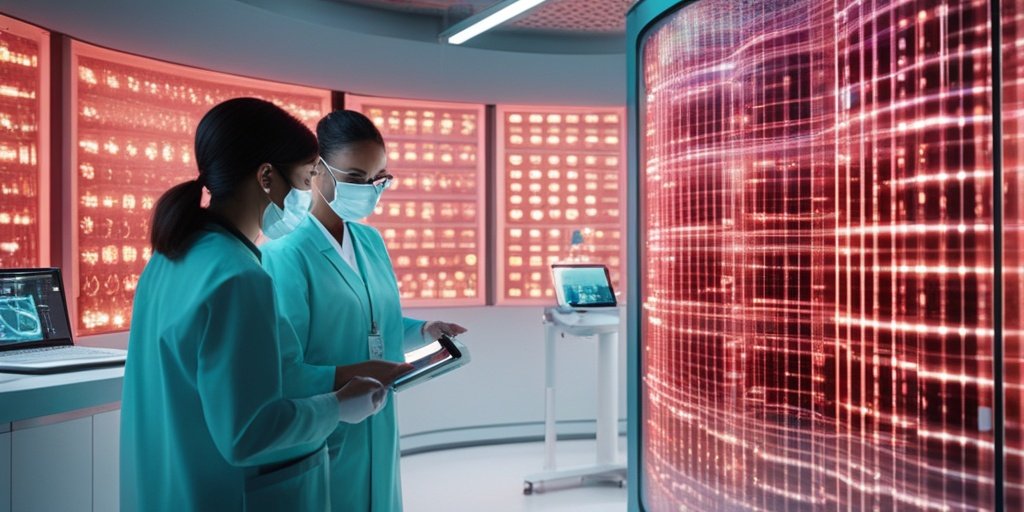⚡ Quick Summary
This study explores the integration of artificial intelligence (AI) in pathogenic microbiology, analyzing 27,420 publications from 2010 to 2024. The findings reveal an exponential growth in AI-related research, highlighting eight major application areas that are transforming the field.
🔍 Key Details
- 📊 Dataset: 27,420 publications from Web of Science Core Collection
- 🗓️ Timeframe: 2010 to 2024
- 🌍 Key contributors: China and the USA
- 🔍 Major application areas: Pathogen detection, antibiotic resistance prediction, transmission modeling, genomic analysis, therapeutic optimization, ecological profiling, vaccine development, and data management systems
🔑 Key Takeaways
- 📈 Exponential growth in AI-related publications since 2016.
- 🌐 Significant contributions from China and the USA in AI research.
- 🔗 Interconnected research landscape observed between drug resistance and vaccine development.
- 🏥 AI’s role is expanding from laboratory research to clinical applications.
- ⚡ Enhanced hospital operations and public health strategies through AI.
- 💡 AI optimizes pathogen detection and improves diagnostic speed.
- 🦠 Key advancements in rapid antibiotic susceptibility testing and COVID-19 vaccine development.
- 📊 Study guides future research directions and policy-making.

📚 Background
The integration of artificial intelligence into various scientific fields has been a game-changer, and pathogenic microbiology is no exception. As researchers strive to understand and combat infectious diseases, AI offers innovative solutions that enhance research capabilities and clinical practices. This study aims to shed light on the evolution and trends of AI applications in this critical area of microbiology.
🗒️ Study
The authors conducted a comprehensive bibliometric analysis and topic modeling of 27,420 publications sourced from the Web of Science Core Collection. This extensive dataset covers a significant period from 2010 to 2024, allowing for a thorough examination of the trends and developments in AI applications within pathogenic microbiology.
📈 Results
The analysis revealed a remarkable exponential increase in AI-related publications since 2016, with notable contributions from researchers in China and the USA. The study identified eight major application areas where AI is making a significant impact, including pathogen detection and antibiotic resistance prediction. Furthermore, the research highlighted substantial lexical overlaps between these areas, particularly between drug resistance and vaccine development, indicating a highly interconnected research landscape.
🌍 Impact and Implications
The findings of this study underscore the transformative potential of AI in pathogenic microbiology. By moving from laboratory research to clinical applications, AI is enhancing hospital operations and public health strategies. The advancements in rapid antibiotic susceptibility testing and the development of COVID-19 vaccines exemplify how AI can optimize pathogen detection and improve treatment efficacy. This research not only highlights the current status and progress of AI in the field but also serves as a guide for future research directions and resource allocation.
🔮 Conclusion
This study illustrates the significant role of AI in advancing pathogenic microbiology. As AI technologies continue to evolve, they promise to enhance diagnostic speed, treatment efficacy, and disease control. The future of AI in this field looks promising, and ongoing research will be crucial in addressing the challenges and maximizing the benefits of these technologies.
💬 Your comments
What are your thoughts on the integration of AI in pathogenic microbiology? We invite you to share your insights and engage in a discussion! 💬 Leave your comments below or connect with us on social media:
Harnessing AI for advancing pathogenic microbiology: a bibliometric and topic modeling approach.
Abstract
INTRODUCTION: The integration of artificial intelligence (AI) in pathogenic microbiology has accelerated research and innovation. This study aims to explore the evolution and trends of AI applications in this domain, providing insights into how AI is transforming research and practice in pathogenic microbiology.
METHODS: We employed bibliometric analysis and topic modeling to examine 27,420 publications from the Web of Science Core Collection, covering the period from 2010 to 2024. These methods enabled us to identify key trends, research areas, and the geographical distribution of research efforts.
RESULTS: Since 2016, there has been an exponential increase in AI-related publications, with significant contributions from China and the USA. Our analysis identified eight major AI application areas: pathogen detection, antibiotic resistance prediction, transmission modeling, genomic analysis, therapeutic optimization, ecological profiling, vaccine development, and data management systems. Notably, we found significant lexical overlaps between these areas, especially between drug resistance and vaccine development, suggesting an interconnected research landscape.
DISCUSSION: AI is increasingly moving from laboratory research to clinical applications, enhancing hospital operations and public health strategies. It plays a vital role in optimizing pathogen detection, improving diagnostic speed, treatment efficacy, and disease control, particularly through advancements in rapid antibiotic susceptibility testing and COVID-19 vaccine development. This study highlights the current status, progress, and challenges of AI in pathogenic microbiology, guiding future research directions, resource allocation, and policy-making.
Author: [‘Tian T’, ‘Zhang X’, ‘Zhang F’, ‘Huang X’, ‘Li M’, ‘Quan Z’, ‘Wang W’, ‘Lei J’, ‘Wang Y’, ‘Liu Y’, ‘Wang JH’]
Journal: Front Microbiol
Citation: Tian T, et al. Harnessing AI for advancing pathogenic microbiology: a bibliometric and topic modeling approach. Harnessing AI for advancing pathogenic microbiology: a bibliometric and topic modeling approach. 2024; 15:1510139. doi: 10.3389/fmicb.2024.1510139